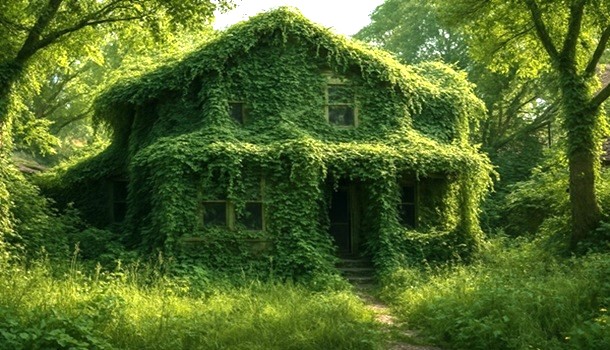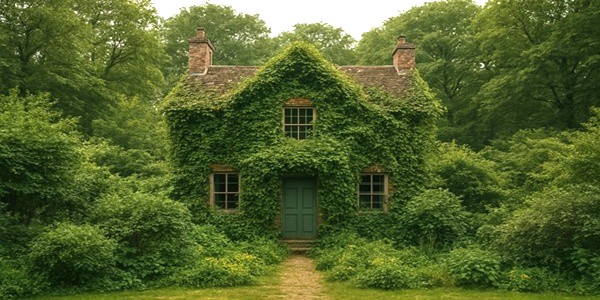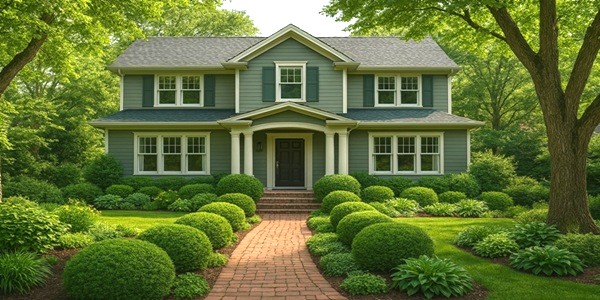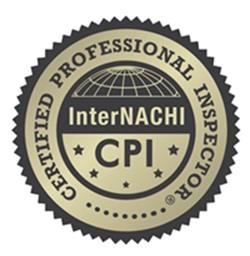Massachusetts Home Inspections YOUR INVESTMENT IS MY CONCERN

Vegetation Around Your Home

Do not allow your home to be hidden by vegetation
While lush greenery may look charming around a home, having vegetation too close to the structure can cause more harm than good. Tree roots can creep into foundations and underground pipes, leading to costly repairs. Dense shrubs and climbing vines tend to trap moisture against walls, encouraging mold, mildew, and even wood rot. Insects and rodents often use overgrown plants as a bridge to enter the home, while overhanging branches can clog gutters, damage the roof, and block sunlight and airflow—key elements in keeping a house dry and well-ventilated.
Beyond the risk of structural damage, vegetation near the home also presents safety hazards. In areas prone to wildfires, dry plants and brush close to the building become serious fire risks. Even in less extreme environments, accumulated leaves and organic debris around the perimeter of a home can hold in moisture and provide ideal conditions for pests. Keeping a clear buffer between your home and dense vegetation is not just about maintaining curb appeal—it's a necessary step in protecting your property and health.

In addition to preventing insect damage, managing vegetation helps improve home security. Avoid letting tall shrubs or dense trees create hiding spots near doorways, walkways, or windows. Ideally, keep plantings under three feet tall in these areas. Pruning plants that obstruct your home from the street or your neighbors' view can also be a smart safety measure. While privacy is important, visibility helps ensure that any suspicious activity around your home doesn’t go unnoticed. When you're away, neighbors are more likely to notice anything unusual if they can see your doors and windows. Curtains and blinds offer indoor privacy—your landscaping doesn’t need to.
Regular maintenance is key. Trim back tree branches, vines, and shrubs so they don’t touch your home’s siding or roof. This allows sunlight to reach moisture-prone areas and discourages wood-boring insects, which are drawn to damp wood and the shelter of overgrowth. Branches and vines can act as ladders for pests, and decaying wood from dead trees or stumps within 50 feet of your home can support insect infestations. Firewood should also be stored off the ground and away from the house to avoid attracting unwanted guests.
Thoughtfully managed greenery around your beautiful home enhances both safety and longevity while still allowing your property to feel natural and inviting. Yes, its a lot of work, but your investment should always be your concern.

Here is what my clients have to say about my home inspection services:
Press F5 (on your keyboard) for additional testimonials
Thank you for your very thorough and impressive work. We really appreciated the difference in level of service you provided compared to many other people we have dealt with.
Steven














